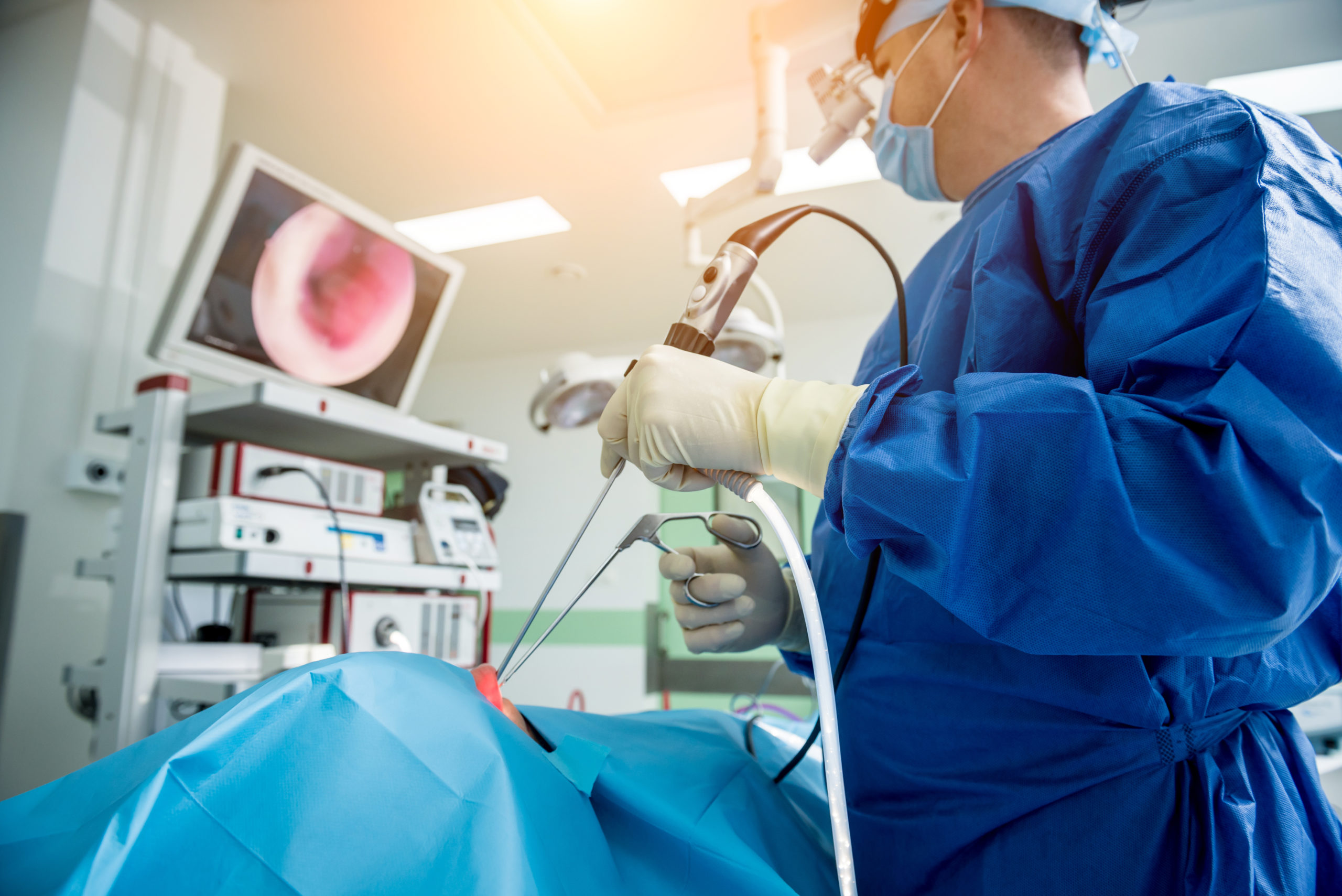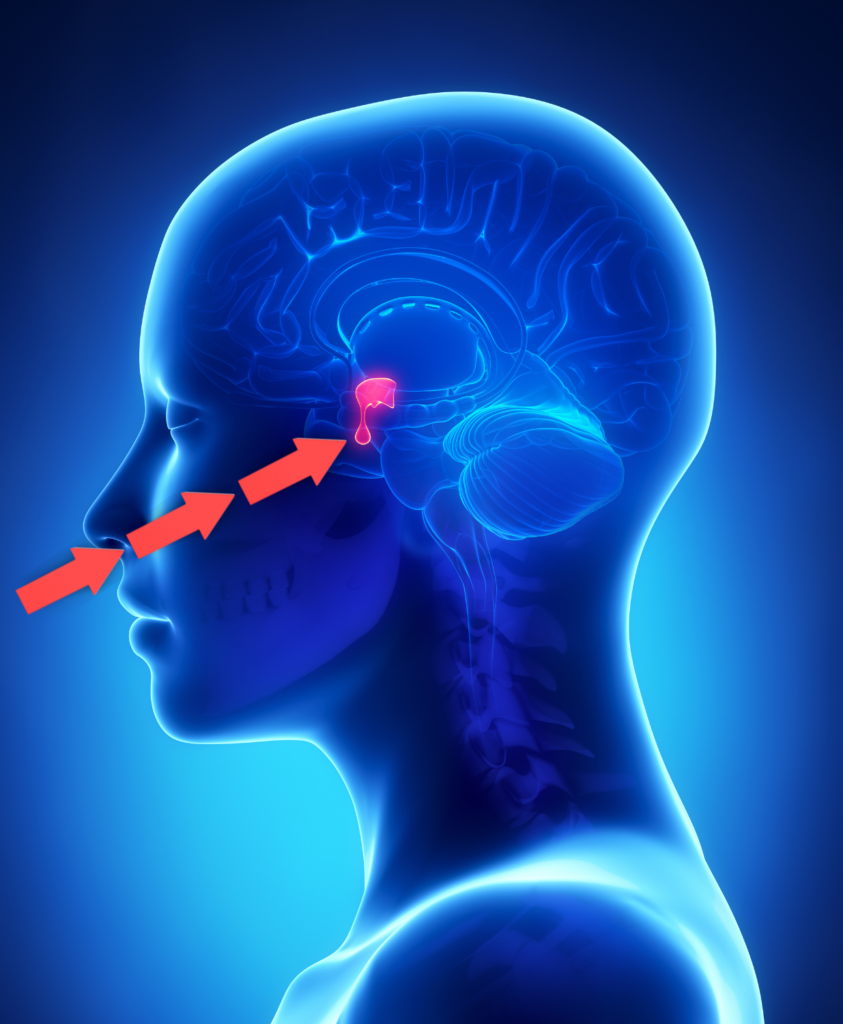
Transnasal pituitary endoscopy
Pituitary adenoma: the intervention
To deal with this benign tumor of the pituitary gland it is often necessary to provide a surgery, unless it's a pituitary adenoma which secretes prolactin or growth hormone. In such cases, a simple follow-up or drug therapy, possibly accompanied by radiotherapy, may be sufficient.
Since the patient's well-being also depends on the times and methods of recovery, the least invasive types of intervention as possible are preferred. Among these, the transphenoidal transnasal endoscopic surgery.

Transphenoidal transnasal endoscopic surgery
This minimally invasive technique it allows to reach the pituitary adenoma through the nasal cavity and the sphenoid, the bone with the characteristic butterfly shape that is found at the base of the skull. The endoscope, which allows you to view the inside of the cavity, and the surgical instruments that will remove the adenoma are inserted. No incision is therefore necessary on the face or skull to achieve the goal.
The final purpose of the operation is indeed the most complete removal possible pituitary adenoma without affecting the functionality of the pituitary gland, endocrine gland essential to the body, or damage the optic nerves. Immediately after surgery, the adenoma is analyzed in the laboratory to fully understand its nature.
Explanatory video of endoscopic pituitary surgery (in French)
Thanks to Dr. Martin Dupuy, fellow neurosurgeon in the neurosurgery department of the Clinique de l'Union (Toulouse, France), for making and sharing this video.
After surgery: course and complications
The intervention is a little painful and the primary side effect, but in any case temporary, is the perception of having a cold: feeling of stuffy nose, modest headache, discharge from the nose.
In the absence of particular complications, the hospital stay is on average 4-5 days. In some cases, the surgery may be followed by radiotherapy.
Like any surgical operation, there may also be risks in the case of transnasal transphenoidal endoscopic surgery. Among the general ones are included infection, bleeding, phlebitis, pulmonary embolism and allergic reactions to the anesthetic. The specific risks for this intervention are instead:
- CSF fistula, which is formed when the fluid present in the meninges around the brain escapes through the opening due to the surgery. It is possible to identify it in the days immediately following: clear liquid flows from the nostrils that can easily be mistaken for water. In these cases, another surgery is rarely opted for and a lumbar puncture may be appropriate. At the end of the operation, just to avoid this possibility, the meninges are carefully closed, sometimes also thanks to the removal of fat from the abdomen or thigh
- pituitary insufficiency: if the pituitary no longer produces one or more hormones, replacement drug therapy is necessary, which can also become permanent
- diabetes insipidus, a rare metabolic disease that manifests itself as a disturbance in the regulation of thirst and in the production of urine. It occurs when there is damage to the back of the pituitary and may require replacement therapy
- meningitis: This infection is secondary to a meningeal rupture and is usually treated with appropriate antibiotics
- visual disturbances: If the pituitary adenoma has compromised the optic nerve, vision may be affected
- epistaxis: the mucous membranes become irritated due to the passage of surgical instruments, resulting in delayed nasal bleeding. It is more common in patients suffering from bleeding disorders or taking blood-thinning medications
- sinusitis and infection of the nasal cavities
- vascular injury, as the main arteries to the brain are particularly close to the area on which the intervention is carried out
It is treatable complications, even if they naturally impact on hospitalization times.
What to do after the surgery
After the intervention, you can resume your regular activities. After 10 days, a washing of the nasal cavities e throughout the following month you have to carry on some small ones precautions:
- do not blow your nose
- do not sneeze with your mouth open
- avoid effort with the glottis closed
- do not put your head under water
- avoid contexts where there is a lot of dust
To better monitor the postoperative course, it is recommended a first check after 3 months or at least within the following 6 months. In some specific cases, it is good to undergo it even earlier. The visit includes:
- evaluation of the functioning of the pituitary gland with the support of an endocrinologist
- magnetic resonance
- eye assessment




